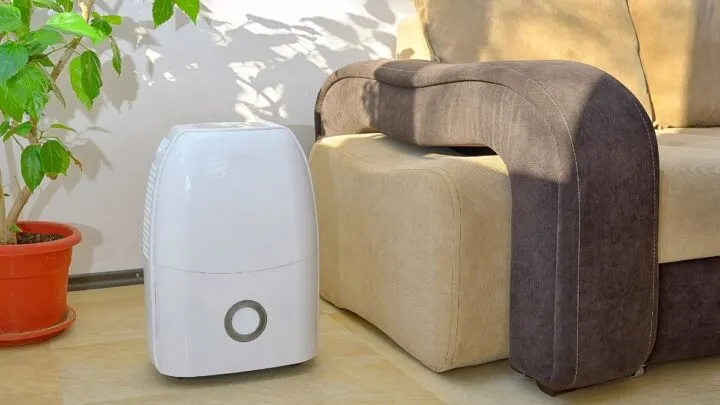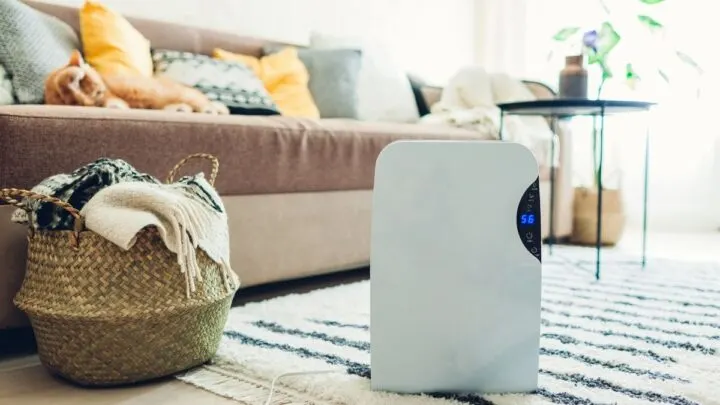If you’re like most people, the idea of a humid basement probably doesn’t appeal to you. But do you actually need a dehumidifier in your basement?
If your basement feels like a dungeon, it’s probably because it’s too humid. This can cause mold and mildew growth, which is unsightly and dangerous to your health.
A dehumidifier are a great way to help prevent mold, mildew growth, and odors in your basement. These might happen if you live in a humid environment or have a seeping foundation.
Or, if you have carpeting or another type of absorbent flooring in your basement, a dehumidifier can help to prevent musty odors.
Basements can be damp, dark, and dreary places. If you’re like most people, you probably use your basement for storage or as a place to hide from the world.
But what if your basement could be more than just a place to store boxes? What if it could be a comfortable place to relax in or even work in?
Believe it or not, with the help of a dehumidifier, your basement can be all of these things! In this article, we will discuss everything you need to know about dehumidifiers and basements.
We’ll cover topics such as what a dehumidifier is, how it works, the benefits of using one in a basement, and more!
What is a Dehumidifier?
A dehumidifier is a device that is used to remove excess moisture from the air. This can be particularly useful in areas with high humidity levels, such as basements, attics, and garages.
Dehumidifiers work by drawing in the surrounding air and passing it over a cold surface or through other materials.
These materials draw out moisture from the air, leaving behind dry air that is less likely to cause problems like mold growth or dust mites.
In addition to being useful for reducing household allergens, a dehumidifier can also help to protect your home from potential water damage caused by excessive condensation.
A dehumidifier generally consists of a fan module and a collection container for draining excess moisture out of the air.
Because they are essential home appliances used to promote healthy living environments, dehumidifiers are commonly found in residential homes as well as public buildings such as schools, offices, and hospitals.
How Does a Dehumidifier Work?
The vast majority of dehumidifiers work using a simple yet effective principle: they cool the air, causing water vapor to condense on the evaporator coils.
The collected water then drips into a holding tank or drains out through a hose. In order to function properly, dehumidifiers must be placed in an area with good airflow.
This helps to ensure that the humid air comes in contact with the coils, allowing the dehumidifier to do its job.
Additionally, most dehumidifiers are equipped with a humidity sensor, which switches the unit on and off as needed to maintain a desired level of humidity.
By understanding how dehumidifiers work, you can be sure to use them effectively in your basement.
Do I Need a Dehumidifier in My Basement?
Many homeowners wonder if they need a dehumidifier in their basement. The answer to this question depends on several factors, including the humidity levels in your area, the amount of moisture in your basement, and the type of flooring you have.
If you live in an area with high humidity levels, it is more likely that your basement will be damp.
Likewise, if you have a lot of moisture in your basement, such as from a leaky pipe or seeping foundation, a dehumidifier can help to prevent mold and mildew growth.
Finally, if you have carpeting or another type of absorbent flooring in your basement, a dehumidifier can help to prevent musty odors.
In sum, whether or not you need a dehumidifier in your basement depends on the conditions in your home.
However, if you are unsure, it is always best to consult with a professional before making a purchase.

How To Properly Run a Dehumidifier
Running a dehumidifier in your basement can be a great way to improve air quality and reduce allergies, but it’s important to use the appliance properly.
First, make sure to place the dehumidifier in an area with good airflow. This will help the unit work more effectively.
Additionally, it is important to empty the water tank regularly or connect a hose to the unit so that excess water can be drained away.
Be sure to clean the filter regularly to prevent dust and dirt build-up. Finally, be sure to monitor the humidity levels in your basement using a hygrometer.
This will help you adjust the settings on your dehumidifier if needed to maintain a desired humidity level.
By following these simple tips, you can be sure that your dehumidifier is working properly and effectively in your basement.
Quick Tips for Using Dehumidifiers
Here are a few quick tips to keep in mind when using a dehumidifier in your basement:
1. Determine How Long Your Dehumidifier Should Run in Winter
During the winters, the basement may not need to be as dry as it does during other seasons. As a result, you may be able to reduce the amount of time your dehumidifier runs.
2. Use a Dehumidifier Along With a Fan
If you have a fan in your basement, you can use it to help circulate air and improve the efficiency of your dehumidifier.
3. Monitor The Humidity Levels in Your Basement Regularly
Be sure to check the humidity levels in your basement on a regular basis. This will help you determine how well your dehumidifier is working and whether or not you need to make any adjustments.
4. Don’t Drop the Humidity Too Low
It’s important to maintain a healthy level of humidity in your basement. Dropping the relative humidity below 15% can actually lead to problems, such as static electricity and cracked wood.
Ideally, you should aim to keep the relative humidity in your basement between 20% and 30%.

Top Rated Dehumidifier Models
Here are a few of the top-rated dehumidifier models on the market:
Honeywell TP50WK
The Honeywell TP50WK is a medium-sized dehumidifier that is perfect for small spaces, such as bedrooms and offices. This unit can remove up to 50 pints of moisture from the air per day and features an automatic shut-off function to prevent overloading.
Frigidaire Dehumidifier
The Frigidaire Dehumidifier has the capacity to remove up to 60 pints of moisture from the environment per day.
This unit features an automatic defrost function to prevent ice build-up and a built-in pump for easy drainage.
Eva-dry Edv-1100
The Eva-dry Edv-1100 is a small, compact dehumidifier that is perfect for areas with limited space.
This unit can remove up to 11 pints of moisture from the air per day and features an automatic shut-off function to prevent overloading.
Summing Up If You Need a Dehumidifier
You know your basement best, and if you have a lot of moisture in the air or live in a humid environment, it could be a good idea to invest in a dehumidifier.
Make sure you monitor the water levels in the air to allow for proper airflow and to make sure that you’re getting the best output from your dehumidifier. As always, if you’re not sure if you should invest, ask a professional first!


